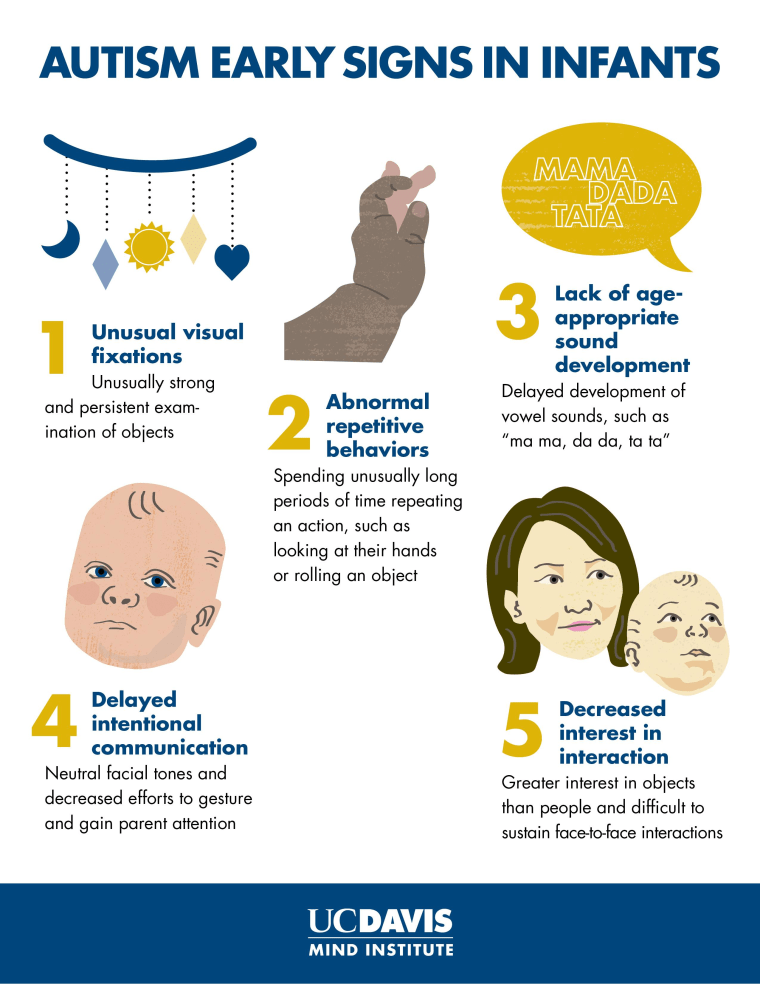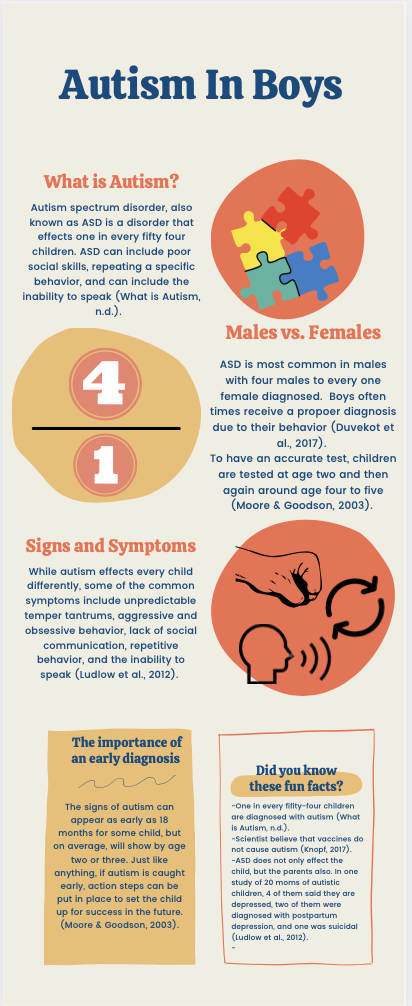Developing meaningful friendships with help from an Autism Therapist
Developing meaningful friendships with help from an Autism Therapist
Blog Article
Comprehending the Effect of Behavioral Autism on Day-to-day Live and Social Interactions
You might not understand exactly how deeply behavior autism affects day-to-day life and social communications. Individuals on the range frequently navigate a globe filled up with communication hurdles and sensory overload. These challenges can lead to aggravation and isolation, impacting their connections and total health.
Specifying Behavioral Autism and Its Characteristics
Behavior autism, usually referred to as autism spectrum disorder (ASD), includes a variety of conditions characterized by obstacles in social interaction, communication, and repetitive actions. You could notice that people with ASD frequently struggle to analyze social hints, which can lead to misconceptions in conversations. They may locate it difficult to develop eye call or take part in tiny talk, making social circumstances really feel overwhelming.
Interaction troubles can show up in various means, from postponed speech development to a choice for using less words. Repetitive habits, such as hand-flapping or rocking, can act as coping devices to manage anxiety or sensory overload. These qualities can profoundly impact day-to-day life, making it important for you to understand and support those with ASD. By identifying these attributes, you can promote an environment that advertises approval and encourages efficient interaction, helping individuals with autism flourish in their everyday communications.
The Spectrum of Autism: Recognizing Irregularity in Actions
Autism spectrum problem (ASD) isn't a one-size-fits-all diagnosis; it varies extensively among individuals. You may experience individuals that are extremely verbal and involve quickly in discussions, while others may like singular activities or interact non-verbally.
In addition, the way people with ASD react to sensory input can differ significantly; some might be bewildered by loud noises or bright lights, whereas others thrive in promoting settings. The range also includes differences in social interactions; some people might battle to interpret social signs, while others browse social settings with loved one simplicity. Understanding this irregularity is crucial, as it assists you value each individual's distinct experience and dressmaker support to their certain requirements, fostering a more comprehensive setting for every person.
Interaction Difficulties Faced by Individuals With Autism
When you interact with individuals on the autism spectrum, you might discover their special communication challenges. They commonly encounter problems with both verbal and nonverbal signs, which can affect their social communications. Recognizing these barriers is important for cultivating much better connections and support.

Verbal Interaction Problems
Several people on the autism range experience verbal communication troubles that can substantially affect their everyday interactions. You could find it challenging to express your ideas, sensations, or needs clearly. This can cause frustration for both you and those around you, as misconceptions occur. You may battle with initiating discussions, preserving a subject, or comprehending subtleties in speech. Typically, you may favor utilizing basic language or repeated expressions, which can limit your ability to involve in much deeper conversations. Your quantity, rate, or tone might not align with social expectations, causing others to misinterpret your intents. Recognizing these challenges can help you and your support network create strategies to improve communication and cultivate far better links with others in your every day life.
Nonverbal Interaction Barriers
Verbal communication isn't the only obstacle individuals on the autism range face; nonverbal communication obstacles can be equally as substantial. You may locate it tough to translate body movement, faces, and eye contact, which are essential for effective interaction. These obstacles can bring about misunderstandings or misinterpretations of social cues, making interactions really feel overwhelming or complex. You may battle to reveal your own feelings with nonverbal means, leaving others unclear of your feelings or purposes. This detach can develop sensations of isolation and aggravation. Acknowledging these barriers is critical for promoting understanding and compassion in your communications. By attending to nonverbal interaction, you can find strategies to enhance your social experiences and boost your overall lifestyle.
Social Communication Influences
Social interactions can commonly really feel overwhelming due to the special interaction challenges dealt with by people with autism. You may have problem with analyzing social cues, making it difficult to comprehend sarcasm or body movement. This can bring about misconceptions or unpleasant moments in discussions. Furthermore, starting and preserving conversations may really feel tough, creating anxiety in social situations. You may choose structured settings, making spontaneous communications unpleasant. It's likewise common to experience problem in engaging in small talk, which can prevent creating new friendships. Acknowledging these difficulties can assist you discover strategies to improve communication, such as practicing social abilities in risk-free settings or utilizing aesthetic help - Aba Therapist. Understanding your needs permits you to navigate social communications with higher confidence and ease.
Social Communication and Relationship Building in Autism
While building connections can be testing for people with autism, comprehending their distinct point of views and interaction designs can foster purposeful connections. You could notice that several individuals on the spectrum favor direct communication and might have a hard time with social hints or this small talk. By being uncomplicated in your interactions, you can assist develop an environment where they feel comfortable.
Take the time to observe and pay attention exactly how they reveal themselves. This understanding can direct you in steering conversations more successfully. Participating in shared interests can likewise serve as a bridge to much deeper connections. Whether it's a hobby, a favored program, or a mutual enthusiasm, these common threads can open up doors to friendship.
Day-to-day Live Regimen: Browsing Obstacles and Strategies
Navigating daily life regimens can be specifically challenging for individuals with autism, especially when unanticipated changes happen. To browse these obstacles, consider implementing visual timetables or checklists.
Establishing a routine that includes sensory breaks can additionally be valuable. You can plan time-outs throughout your day to recharge. It's vital to communicate with those around you, allowing them know your requirements and preferences. This aids produce an understanding atmosphere.
Lastly, practice mindfulness strategies to manage tension and anxiousness. Easy breathing workouts or grounding techniques can make a substantial difference. By incorporating these methods, you can improve your everyday routine and lessen disturbances, making life feel much more workable.
Staminas and Capacities of Individuals on the Autism Range
Comprehending everyday life routines is simply one element of the autism experience. Several people on the autism range have exceptional toughness and abilities that establish them apart. You might find that your focus to information is remarkable, enabling you to stand out in jobs that need accuracy and emphasis. Your capacity to believe outside the box can result in innovative services in various scenarios.
Furthermore, your memory abilities frequently beam, especially in areas of rate of interest. Autism Therapist. This knack for keeping information can make you a valuable resource in fields like art, modern technology, or scientific research. You might additionally display solid aesthetic reasoning, allowing you to imagine complicated principles and solve issues artistically
In addition, your unique perspective on the world can additional resources cultivate empathy and understanding in others, improving social interactions. Accepting these staminas not only enhances your confidence however likewise aids others appreciate the diverse talents you give the table.
Producing Comprehensive Settings for Individuals With Autism
Developing comprehensive settings for people with autism begins with designing sensory-friendly rooms that satisfy their one-of-a-kind needs. You can additionally promote opportunities for social communication, aiding to develop relationships and connections. By making these changes, you'll add to an extra inviting environment for everyone.
Creating Sensory-Friendly Spaces
While developing sensory-friendly spaces, it's important to reflect on the distinct needs of people with autism. Begin by picking soothing shades and soft lighting to create a relaxing setting. When bewildered, integrate silent zones where individuals can recharge and pull away. You'll intend to lessen loud sounds and diversions, making use of soundproof materials or white sound equipments to help preserve tranquility. Consider responsive components like soft fabrics or fidget-friendly objects that can provide comfort. Establish that rooms are adaptable, allowing for very easy reformation to suit different tasks. Finally, include visual schedules or clear signage to assist people browse the room with confidence. By attentively integrating these components, you can create an inviting ambience that sustains sensory requirements and advertises overall health.
Promoting Social Interaction Opportunities
Designing sensory-friendly rooms not only addresses private comfort however also establishes the stage for significant social communications among individuals with autism. Urge peer mentoring, pairing individuals with autism with encouraging peers who can direct them via social situations. By carrying out these techniques, you can improve social opportunities, aiding people with autism develop friendships and enhance their social abilities in a safe, welcoming environment.

Often Asked Inquiries
Exactly How Can Friends Support A Person With Behavioral Autism?
You can sustain a pal with behavior autism by holding your horses, listening actively, and respecting their limits. Participate in tasks they enjoy, interact freely, and produce a comfortable environment where they feel valued and understood.
What Resources Are Available for Parents of Children With Autism?
You can discover different resources for moms and dads of youngsters with autism, including support system, academic web sites, and regional neighborhood services. Getting in touch with various other moms and dads can likewise give useful understandings and shared experiences to assist navigate obstacles.
Can Behavioral Autism Change With Time?

Yes, behavioral autism can change gradually. You might notice changes in interaction, social abilities, and behavior as your kid grows. Early treatment and assistance commonly play vital roles in these developmental adjustments.
Exactly How Do Sensory Level Of Sensitivities Impact Life?
Sensory sensitivities can make daily experiences frustrating. You might have problem with loud noises or intense lights, leading to stress and anxiety or evasion. Discovering settings that accommodate your needs can substantially improve your comfort and total every day life.
What Are Typical Misconceptions Concerning Behavioral Autism?
You could think behavior autism just affects communication abilities, but it's more complicated. Numerous think individuals lack compassion or knowledge, which isn't real. Recognizing these misunderstandings aids foster acceptance and assistance for those on the spectrum.
Behavioral autism, commonly referred to as autism range problem (ASD), encompasses a variety of problems defined by difficulties in social communication, communication, and repetitive behaviors.Social communications can usually feel overwhelming due to the one-of-a-kind communication challenges visit here faced by people with autism.Creating sensory-friendly rooms not just addresses individual comfort however also sets the stage for meaningful social interactions among individuals with autism. Urge peer mentoring, pairing people with autism with helpful peers who can direct them with social scenarios. By applying these techniques, you can improve social chances, helping individuals with autism develop friendships and strengthen their social skills in a safe, inviting atmosphere.
Report this page